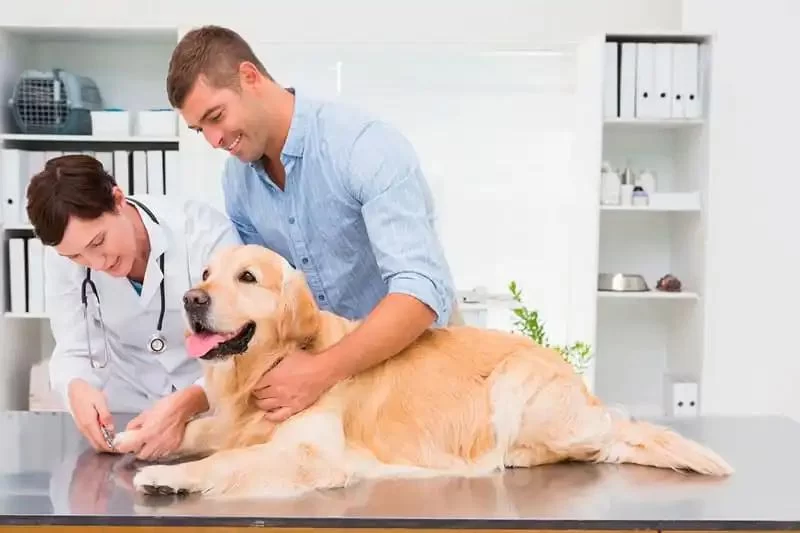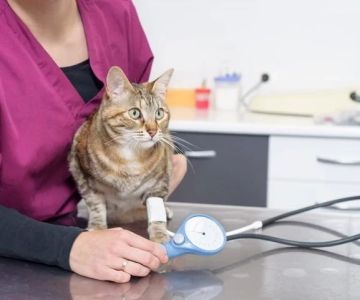- Understanding Pet Anxiety
- Why Pets Become Anxious at the Vet
- Steps to Train Your Pet to Stay Calm
- Positive Reinforcement and Socialization
- Veterinary Tips for Stress-Free Visits
Understanding Pet Anxiety
Just like humans, pets experience stress and anxiety, especially in situations that are unfamiliar or intimidating. One of the most common places where pets feel anxiety is the veterinary office. The sights, sounds, and smells of a vet visit can overwhelm your furry friend, causing them to become nervous, fearful, or even aggressive. Understanding the root cause of this anxiety is the first step in addressing it.
Pets may associate the vet with past unpleasant experiences, such as shots, examinations, or other medical treatments. Similarly, the unfamiliar environment and strange people or animals can add to the stress. As a pet owner, it’s important to recognize the signs of anxiety and take proactive steps to help your pet feel more comfortable. By training your pet and preparing them ahead of time, you can reduce their stress and make vet visits a more positive experience. At Hidden Brook Veterinary, we understand the importance of a calm pet and offer helpful advice and resources to support you and your pet during these visits.
Why Pets Become Anxious at the Vet
Pets, especially dogs and cats, are often anxious during vet visits due to several reasons. For dogs, the stress of being in an unfamiliar environment can trigger anxiety. The sounds of barking, other animals, and unfamiliar smells can make them feel threatened. For cats, the experience can be even more distressing, as they are more sensitive to changes in their environment and tend to be more independent. However, no matter the cause, pet anxiety at the vet is not only distressing for the animal but also challenging for the owner and the veterinary staff.
Another factor that contributes to anxiety is the medical procedures themselves. Many pets associate the vet with discomfort or pain, particularly if they've had previous experiences with injections, blood tests, or other treatments. Understanding the specific triggers for your pet’s anxiety will help you address these issues effectively and train your pet to remain calm during vet visits. Hidden Brook Veterinary is committed to helping pet owners manage these challenges through personalized care and support.
Steps to Train Your Pet to Stay Calm
Training your pet to stay calm at the vet takes time, patience, and consistency. Here are some effective steps to help your pet remain calm and relaxed during their vet visits:
- Start Early: If possible, begin training your pet while they are still young. Early socialization helps pets develop positive associations with new environments and experiences.
- Frequent Visits: Schedule regular visits to the vet or even stop by just for a visit without an appointment. This helps your pet become familiar with the environment and reduces the fear of unknown situations.
- Practice Handling: Get your pet used to being touched in areas that will be examined at the vet, such as their paws, ears, and mouth. Gently practice these actions at home to desensitize them to the sensations.
- Stay Calm: Pets can sense your emotions. If you’re anxious or stressed, your pet will mirror those feelings. Stay calm and composed during the visit, as your calmness will help soothe your pet.
- Use Familiar Scents: Bring a favorite toy, blanket, or some of their bedding to the vet. Familiar scents can help comfort your pet and create a sense of security in the new environment.
Positive Reinforcement and Socialization
Positive reinforcement is a powerful tool in training your pet to stay calm at the vet. Reward your pet with treats, praise, or affection when they exhibit calm behavior. This reinforces the idea that staying calm during the visit leads to positive outcomes. Over time, your pet will associate the vet with rewards rather than fear.
Socialization is equally important. Exposing your pet to new people, animals, and environments regularly can help them become more adaptable and less fearful in unfamiliar situations. The more socialized your pet is, the less likely they are to become anxious during vet visits. It’s crucial to gradually increase the intensity of socialization experiences, starting with less stressful situations and working up to more challenging environments.
Veterinary Tips for Stress-Free Visits
Veterinary visits don’t have to be stressful. Here are some tips that can help make the experience easier for both you and your pet:
- Arrive Early: Arriving a few minutes early gives you time to settle in and reduces the feeling of rushing. It also allows your pet to acclimate to the surroundings before the appointment begins.
- Choose a Vet with Experience in Handling Anxious Pets: At Hidden Brook Veterinary, we specialize in providing gentle care for pets with anxiety. Our staff is trained to handle pets with care and ensure their comfort throughout the visit.
- Stay Consistent with Training: Continue your calm behavior training at home, and don’t forget to practice calm handling. The more consistent you are with training, the easier it will be for your pet to adjust to vet visits.
By following these steps and seeking support from a veterinary team like the one at Hidden Brook Veterinary, you can help your pet overcome their fear of the vet and make their visits stress-free. With patience, consistency, and the right training, your pet can learn to stay calm and enjoy a healthy, happy life with fewer stressful experiences.












